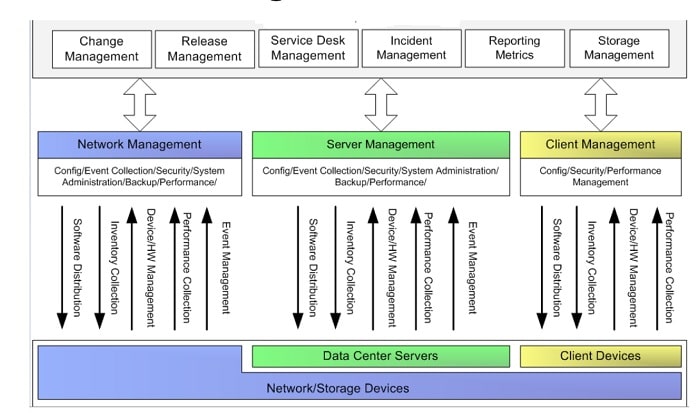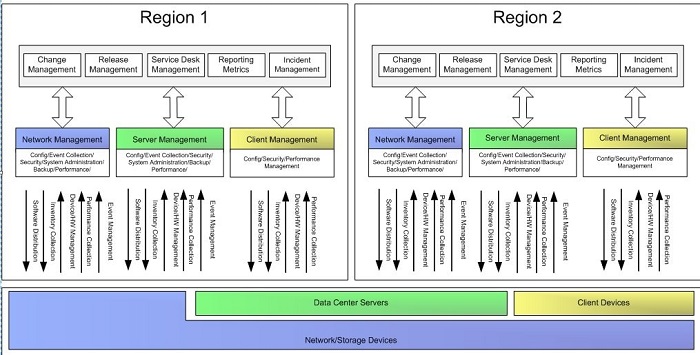Security Operations
{`
Kelly School of Business
Indiana University
Information Systems Graduate Programs
`}
Themes of Security Operations
- Maintaining Operational Resilience
- Protecting Valuable Assets
- Controlling System Accounts
- Managing Security Services Effectively
Maintaining Operational Resilience
- Maintain expected levels of service availability and integrity of critical systems
- Contingency Planning
- Fault tolerance
- Data protection o RAID
- Database shadowing o Data backups
- Electronic vaulting
- Software o Updates
- Configurations
- Hardware
- Hot spares
- Communications
- Redundant providers
- Business Continuity Plan
Protecting Valuable Assets
- Provide day-to-day protection for human and material assets
- Tangible vs. intangible assets
- Tangible assets o Physical assets and hardware o Facilities
- Media
- Personnel Safety
- Intangible assets o Intellectual property
- Intrusion detection and prevention
- Boundary controls
- Data Leak/Loss Prevention (DLP)
Controlling System Accounts
- Provide checks and balances against privileged accounts
- Assign specific privileges to various classes of system accounts and monitor them continuously
- Ordinary user accounts
- Privileged user accounts o System administrators o Operators o Security administrators o Database administrators
o Application administrators
- Clearances and background checks
- Need-to-know/least privilege
- Separation of duties
- Job rotation
Managing Security Services
- Manage day-to-day operations of key security management services
- Incident Response
- Change and Configuration Management
- Patch and Vulnerability Management
- Problem Management
Patch and Vulnerability Management
- The main objective of a patch management program is to create a consistently configured environment that is secure against known vulnerabilities in operating systems and application software
Vulnerability Management Systems
- Vulnerabilities arise from flaws, misconfigurations and policy failures
- Flaws result from product design imperfections
- Example: Buffer overflow
- Misconfigurations represent implementation errors that expose a system to attack
- Example: Weak access control lists, open ports
- Policy failures occur when individuals fail to follow or implement security as required Example: Weak passwords, unauthorized network devices
- Vulnerability scanning
- Network scan
- Host-based scan
- Application security scan
Patch and Vulnerability Management
- Steps in patch management
- Identify flaws/vulnerabilities
- Risk-based decision to determine the necessity of patching the problem
- Patch prioritization and scheduling
- Patch testing
- Patch installation and deployment
- Change management
Patch and Vulnerability Management
- Sources of vulnerability and patch availability information
- http://cve.mitre.org
- http://nvd.nist.gov
- http://www.us-cert.gov
- Vendor specific security bulletins
Change Management
- Change Control Process
- Requests
- Impact assessment
- Approval/disapproval
- Build and test
- Notification
- Implementation
- Validation
- Documentation
- Library maintenance
- Original copies of all software media must be preserved in a software library for integrity control
- Patch Management
Configuration Management
- Configuration management is a process of identifying and documenting hardware components, software, and the associated settings
- Configuration management provides an organization with knowledge about all of its parts
- Knowing what composes the system is the first critical step in understanding what is needed to defend it
- A well-documented environment provides a foundation for sound operations management by ensuring that IT resources are properly deployed and managed
Configuration Management - Hardware
- A hardware inventory should minimally include:
- Make
- Model
- MAC addresses
- Serial number
- Operating system or firmware version
- Location
- BIOS and other hardware-related passwords
- Assigned IP address if applicable
- Organizational property management label or bar code
Configuration Management - Software
- A software inventory should minimally include:
- Software name
- Software vendor (and reseller if appropriate)
- Keys or activation codes (note if there are hardware keys)
- Type of license and for what version
- Number of licenses
- License expiration
- License portability
- Organizational software librarian or asset manager
- Organizational contact for installed software
- Upgrade, full or limited license
Configuration Management Steps
- Identify the configuration items, components, and related work products that will be placed under configuration management
- Establish and maintain a configuration management and change management system for controlling work products
- Create or release baselines for internal use and for delivery to the customer
- Track change requests for the configuration items
- Control changes in the content of configuration items
- Establish and maintain records describing configuration items
- Perform configuration audits to maintain the integrity of the configuration baselines
Source: https://www.sei.cmu.edu/productlines/frame_report/config.man.htm
Service Level Agreement (SLA)
- A SLA is simply a document describing the level of service expected by a customer from a supplier, laying out the metrics by which that service is measured, and the remedies or penalties, if any, should the agreed-upon levels not be achieved
- Usually, SLAs are between companies and external suppliers, but they may also be between two departments within a company; these are referred to as Operational Level Agreements (OLAs)
- Few metrics
- Service availability
- Defect rates
- Technical quality
- Security
Information Security Testing
- Penetration testing (Ethical hacking, vulnerability testing)
- Simulate an attack on a system or network at the request of the owner to evaluate risk
- Usually focused on perimeter systems
- Must have clearly defined objectives, scope, stated goals, agreed upon limitations and acceptable activities
- Management oversight is essential to ensure damage does not result
Information Provisioning
- Zero knowledge
- Also called black box test
- Tester is provided no information
- Partial knowledge
- Provides limited information
- Full knowledge
- All available information is provided
Pen Testing Methodology
- Reconnaissance/Discovery
- Enumeration
- Vulnerability Analysis
- Exploitation
- Document Findings
Testing Strategies
- External vs. Internal testing
- Blind testing
- Limited information test. Defenders know that the test is being conducted
- Double blind testing
- No information provided. Defenders do not know of test
- Targeted testing
- Testers and defenders are aware of all information
Types of Testing
- Application testing
- DoS testing
- War dialing
- Wireless network testing
- Social engineering
- PBX and IP telephony testing
Design Options for Management Architecture
- Two options
- Centralized and shared architecture
- Distributed architecture
- These options are not mutually exclusive.
- Most organizations have a combination of centralized, shared, and distributed management tools and processes.
Source: Management Architecture Blueprint , WSSRA, Microsoft Corp.
Design Option 1 Centralized and Shared Management Architecture
- Designed to facilitate centralized management.
- Totally centralized management is not always feasible
- for example, individual geographic divisions or specific business units might require a large amount of control over the management of infrastructure within their domains.
- Centralized and shared management architectures allow organizations to consolidate and centralize while meeting the particular requirements of operating independent data centers or particular application groups.
- Also known as shared services architecture
- This is the ideal architecture though hard to achieve
Source: Management Architecture Blueprint , WSSRA, Microsoft Corp.
Centralized Management Architecture

Source: Management Architecture Blueprint , WSSRA, Microsoft Corp.
Design Option 2 Distributed Management Architecture
- In the distributed model, business units or geographically separated business entities provide management services and processes within the boundaries of their organization.
- Most organizations still have distributed management processes and technology architectures for management.
Source: Management Architecture Blueprint , WSSRA, Microsoft Corp.
Distributed Management Architecture

Source: Management Architecture Blueprint , WSSRA, Microsoft Corp.


